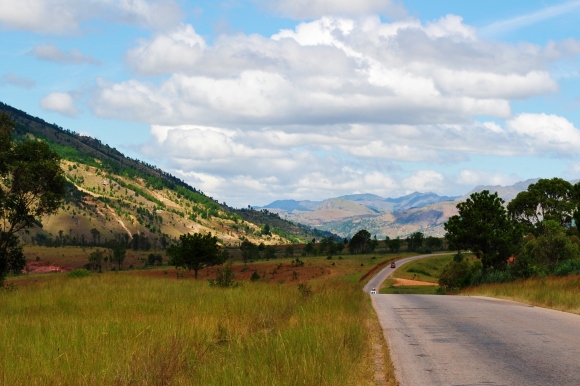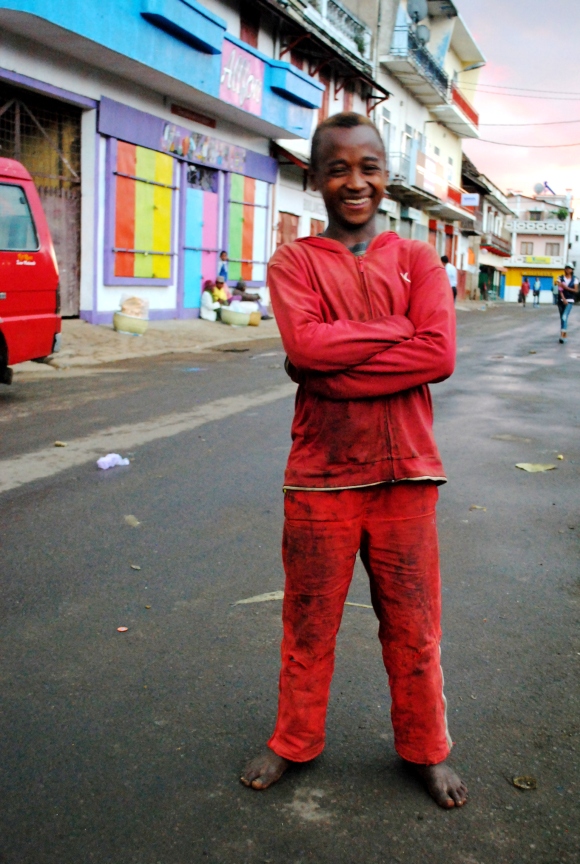 Yesterday was my first full day as an RPCV (Returned Peace Corps Volunteer).
Yesterday was my first full day as an RPCV (Returned Peace Corps Volunteer).
Except, I’m not returned. My friend Liz, who I’ll be travelling with for the next few months, joked that it meant “Recovering Peace Corps Volunteer”. That seems more suiting, since neither of us will return until Christmas. But whatever it means, it’s a pretty significant event. I’m done! We’re done! On Friday, my group of five COS-ers had our official I.D.s punched and voided, our Country Director shook our hands and said “thanks for your service” and we popped open a bottle of cheap champagne from the duty free store to pass around on our walk from the office to lunch. (Note: When a PCV finishes their service, it’s called “COS-ing”. COS stands for “close of service”. Because of medical processing, only a 5-7 volunteers can be COS-ed at a time. Those volunteers are called COS-ers.)
Working up to that moment, the week was filled with lasts. Last goodbyes, last time at my favorite restaurant in Tana, last day as a Peace Corps volunteer. And finally today, I have my last day on this island. My friends that I’m leaving behind keep asking me how I’m feeling. To answer that, I’m feeling a little nostalgic, but mostly excited for new adventures. And honestly, it’s hard to feel really upset about leaving a place when at the same time you’re cursing it under your breath. Last night, our taxi driver asked for a “kiss kiss” goodbye and it pissed me off. We got stopped at a police checkpoint and hassled for our I.D.s. Several homemade bombs have been going off throughout Antananarivo (but fortunately, whoever’s making them isn’t particularly good at it, so there have been no deaths or damages). This week, I’ve generally been irritated and stressed. I’m ready to move on.
I’m sadder about not being a Peace Corps volunteer anymore. All in one day, I lost my home, my job, and a significant part of my identity. I love being a Peace Corps volunteer and I love the family us Madagascar volunteers have built out of being in it together. Also, Madagascar loves us. On a really basic level, PCVs are known for being “those white people who speak Malagasy”, and Malagasy appreciate it. Telling someone that I’m Peace Corps almost always gets a good reaction (when they know what it is, obviously), and I’ll miss this aspect of instant awesome-ness when I tell people my job.
Fortunately it seems like the RPCV community is just as much of a big family as Peace Corps, and just because I’m losing one identity, doesn’t mean I’m not gaining another. Like I said, I’m less sad than excited for new adventures. I’m excited to fly to Kenya with Liz in less than 24 hours (I’m not excited about the 2am departure time). I’m excited for new food, new music, new scenery, and new discoveries. We’ve both put seeing a movie in a real cinema, not on a laptop, as our number one thing we want to do in Nairobi (silly, I know, but i haven’t seen one in 3 years). I’m also excited to finally be making my way home with a RTW (around-the-world) trip!! So guys, save the ‘welcome home’ for Christmas-time… I want to take my time getting home.
Photo: A mix of friends during the second COS week in August while celebrating at Le B’ in Tana









































